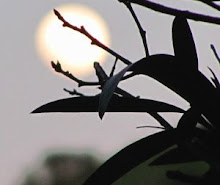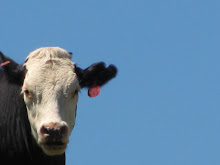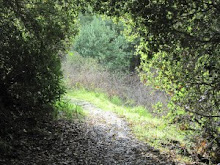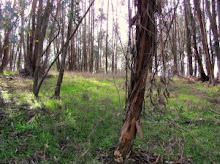It's not apple-blossom time. The apples are round and green already. The Santa Rosa plums have fallen and I've made as much plum jam as I ever want to. The persimmons are like chartreuse nuts and there are many pears on a very old pear tree.
What is blooming in mid-summer in Northern California is music. As I become familiar with neighbors, I've found one who is an autodidact in the field of big band and jazz from the 1920s and 1940s. He began collecting old 78s when he was a teen and after a lifetime has a wonderful collection that still sound great on a turntable.
This is my mother's music, not my own. But when an apple tree is left growing strong in your backyard, I believe it's my luck and duty to take advantage of the sweet nutrition offered. People who come into my life often feel like these heaven-sent gravity blobs, not to put too romantic a spin on it. And so, I've commenced my lessons in 1920s, 1930s, 1940s jazz and big band recordings, tasting for the first time in all seriousness: Fats Waller, Bunny Berrigan, Helen Forest, Boots and His Buddies, the Boswell Sisters, Jelly Roll Morton, Jimmy Noone, Vera Lynn and many more.
Wednesday, July 21, 2010
Tuesday, June 22, 2010
 TThe green hills are drying up, turning to the gold that California is known for. Summer has arrived with packs of bicyclists rolling through town, and on Sunday, the motorcyclists headed up to Port Costa for an afternoon of socializing and drinking (or drinking and socializing).
TThe green hills are drying up, turning to the gold that California is known for. Summer has arrived with packs of bicyclists rolling through town, and on Sunday, the motorcyclists headed up to Port Costa for an afternoon of socializing and drinking (or drinking and socializing). We are here on the estuary, where (to paraphrase an eloquent title of a book of poems by Raymond Carver) 'water comes together with other water.' It's a small town of about 3,000, and yet very busy on weekends especially with pool parties, fish fry's, yard sales, and ice cream socials. I've yet to jump into many of these social activities, except for the once-a-month poetry readings at a deli.
But I have been getting to know neighbors and find the friendly ones among the less-than-friendly. There's a myth about small towns I think, that people are inclined toward friendliness. I actually think urban centers tend to be more friendly. People live in smaller towns for several reasons: they are born to them and never venture beyond; they marry someone who was born to them and refuses to venture beyond; there's a job drawing them, but they aren't so sure; or, they seek more disengagement, more solitude than a larger city would impose.
For us, it is to be closer to natural surroundings and more quiet. After a busy life of being very social, I'm giving in to the introverted part of me that wants less social obligation and more down time to pursue writing projects, art, gardening, hiking on the nearby hills. And, yet, there is a transition, not wanting to give up the old activities, friends, social engagements implied by both of those. So, I drive more, the 17-miles or so into Berkeley, Oakland, across the bridges to Marin and San Francisco.
The difference is mostly in the coming-home experience. Turning off the freeway one exit early to take the back road through the hillside, slowing down with the brights on at night because a deer could jump across the road. Pacing myself downward to where waters come together with other waters . . .
Tuesday, April 27, 2010
Getting a Hood on Your Oriole
As an extremely novice birder, I am enjoying expanding my vocabulary to describe and identify the feathered people living in my new country setting. I could not do this without the help of friends who have flown farther down this particular bird trail. Alison, for one, has become my fall-back gal for identification, but I also rely on the Mt. Diablo Audubon's list-serve, East Bay Birders, for the constant stream of bird notices that are sent out in emails every day, notifying Bay Area folks of who and what and how many are flying through.
My first encounter with birders, however, was not so pleasant. It seemed odd that we would go out all in a bunch, with scopes and guidebooks, while some seemed exceedingly competitive about getting the name out first of a particular bird sited. And, I struggle with whether knowing a bird's name--a man-given nomenclature, after all--really helps me know the bird any better.
Nonetheless, when I spotted this yellow brilliance on a utility pole just outside the house about two weeks ago, I was eager to know what name he goes by (he must surely be a "he," because in the bird realm, the brightest and showiest are usually male). I guessed some kind of oriole by using two or three of the usual birder books (Petersen's, Sibley's), but it was my friend, Alison, who affirmed my suspicion that he is a Hooded Oriole.
Old Hoodie came back after a week. I heard his slight single-noted song, not very fancy but unique and went outside to snap the photo. I feel lucky he has visited twice. This is my first encounter with him and I hope he will return, whether or not I call him by his right name.
We are also getting our red-wing blackbirds in abundance. I took a number of shots down at the Port Costa Reservoir.
My first encounter with birders, however, was not so pleasant. It seemed odd that we would go out all in a bunch, with scopes and guidebooks, while some seemed exceedingly competitive about getting the name out first of a particular bird sited. And, I struggle with whether knowing a bird's name--a man-given nomenclature, after all--really helps me know the bird any better.
Nonetheless, when I spotted this yellow brilliance on a utility pole just outside the house about two weeks ago, I was eager to know what name he goes by (he must surely be a "he," because in the bird realm, the brightest and showiest are usually male). I guessed some kind of oriole by using two or three of the usual birder books (Petersen's, Sibley's), but it was my friend, Alison, who affirmed my suspicion that he is a Hooded Oriole.
Old Hoodie came back after a week. I heard his slight single-noted song, not very fancy but unique and went outside to snap the photo. I feel lucky he has visited twice. This is my first encounter with him and I hope he will return, whether or not I call him by his right name.
We are also getting our red-wing blackbirds in abundance. I took a number of shots down at the Port Costa Reservoir.
Wednesday, April 7, 2010
Species Coexistence
Our birdfeeder has finally been discovered by a squirrel, and the neighbor's cat Ziggy. I'm surprised it took a month to attract anyone other than the birds, mostly house finch and scrub jay, a few white-crowned sparrows, who visit the front yard feeder.
On the hillside just opposite our front, we have watched cows and wild turkeys taking turns in the green green grass. They never seem to appear on the same morning.
And, new neighbors . . . getting to know slowly. Each seems a separate species; we are all coexisting in this little corner of the world called Crockett: the gang that spills out of the church hall after AA meetings, the sincere activists fighting the refinery's disregard for the local residents, the older people who gather for a free lunch at the neighborhood community center, the poets who come into town for a once-monthly reading series, and the bicyclers and motorcyclists who roll through on a Sunday, getting a taste of the "country."
We finally partook of our nicest restaurant in honor of Julian's birthday and got some nice shots of the Carquinez Bridge. Water and grassland are our largest surrounding neighbors. We're learning to navigate our existence in between these two amazing ecozones.
On the hillside just opposite our front, we have watched cows and wild turkeys taking turns in the green green grass. They never seem to appear on the same morning.
And, new neighbors . . . getting to know slowly. Each seems a separate species; we are all coexisting in this little corner of the world called Crockett: the gang that spills out of the church hall after AA meetings, the sincere activists fighting the refinery's disregard for the local residents, the older people who gather for a free lunch at the neighborhood community center, the poets who come into town for a once-monthly reading series, and the bicyclers and motorcyclists who roll through on a Sunday, getting a taste of the "country."
We finally partook of our nicest restaurant in honor of Julian's birthday and got some nice shots of the Carquinez Bridge. Water and grassland are our largest surrounding neighbors. We're learning to navigate our existence in between these two amazing ecozones.
Tuesday, March 30, 2010
What the Children Saw
We peeked, each of us with one bare toe
Squeezed into a knothole,
Glad to trade the pain for another look.
We couldn't see any trees back there,
Just a concrete patio blotched with dirt, and
Blood, and in the far corner
Heavy wooden crates, bound with baling wire.
Full of rabbits, hundreds of them,
All young ones, hiding in the shadows.
Over their heads a sheet of crinkled metal
Stretched across the neighbor's yard.
Underneath, lined up against
The back fence were ten silver buckets.
Catching the steady drips from where
They hung, above, with their necks wrung out.
We peeked, each of us with one bare toe
Squeezed into a knothole,
Glad to trade the pain for another look.
We couldn't see any trees back there,
Just a concrete patio blotched with dirt, and
Blood, and in the far corner
Heavy wooden crates, bound with baling wire.
Full of rabbits, hundreds of them,
All young ones, hiding in the shadows.
Over their heads a sheet of crinkled metal
Stretched across the neighbor's yard.
Underneath, lined up against
The back fence were ten silver buckets.
Catching the steady drips from where
They hung, above, with their necks wrung out.
by Jannie M. Dresser, copyright/all rights reserved 2010
Thursday, March 25, 2010
Turkey Lurking
Wild turkeys couldn't drag me away . . . from the window this morning because they were the very point of my excitement. Looking out across to the green hill opposite of our home, there were nine of them, one male and his harem. The neighbor lady next door, who is mostly reclused with emphysema (we can hear her cough throughout the day and night) used to feed them and when I first moved to town, we watched a bunch of the birds strut down the middle of our street.
I grew up across from a chicken farm that became a turkey farm in Fresno. That was when there were still farmers in Fresno. (Well, there still are, but that gorgeous agricultural land is fast being paved over, as in "they paved paradise and put up a parking lot.") We kids played in the poultry runs after the birds all disappeared in the late autumn.
If everything we connect with in our lives is here to teach us something, I suppose turkeys have taught me not to trust stereotypes. To be a "turkey" is to be foolish, awkward, dim-witted, a loser. But these are magnificent birds and it is good to see the wild ones. Ben Franklin wanted the turkey to be our national bird, and I have to say, if the turkey had beat out the eagle, perhaps we would be a more accommodating society, learning to live with the earth rather than constantly soaring over it, trying to figure out what we could strike next.
I grew up across from a chicken farm that became a turkey farm in Fresno. That was when there were still farmers in Fresno. (Well, there still are, but that gorgeous agricultural land is fast being paved over, as in "they paved paradise and put up a parking lot.") We kids played in the poultry runs after the birds all disappeared in the late autumn.
If everything we connect with in our lives is here to teach us something, I suppose turkeys have taught me not to trust stereotypes. To be a "turkey" is to be foolish, awkward, dim-witted, a loser. But these are magnificent birds and it is good to see the wild ones. Ben Franklin wanted the turkey to be our national bird, and I have to say, if the turkey had beat out the eagle, perhaps we would be a more accommodating society, learning to live with the earth rather than constantly soaring over it, trying to figure out what we could strike next.
Monday, March 15, 2010
Country Diaries

In 1977, a delicately beautiful book came out, The Country Diary of an Edwardian Lady, which was a facsimile of Edith Holden of Warwickshire, England's 1906 diary. It chronicled her year of observing nature and showcased her illustrations of the local birds and plants she lived near.
Holden's "country diary" is my model, and Henry David Thoreau, John Muir, and other American naturalist philosophers are my inspiration for attending to the near of nature in my new environs along the Carquinez Straits. I begin with watching and drawing the birds.
Our backyard apple tree was left unpruned and still covered in slowly rotting fruit for the winter. This first attracted the Western Scrub Jays and Robins, but it is the Northern Mockingbird who really seized the tree as his territory, and for days we could watch him plumping himself on half-chewed apples.
In late February, I added a birdfeeder with sunflower and small seeds, and we have since been besieged by House Finch. But, this past week, I have also observed a large flock of Cedar Waxwings come through.
Other birds of note in the environs, have been Black Phoebes, a Northern Flicker, crows, mourning dove, vultures and a hawk I cannot identify as yet. We also were visited by a Yellow-Rumped Warpler and a Chestnut-Backed Chickadee.
"Women have less accurate measure of time than men. There is a clock in Adam: none in Eve," said Ralph Waldo Emerson. This doesn't have to be taken as a sexist remark (though sexism pervaded the culture in Emerson's day, he was relatively enlightened as to women's value and intelligence). Instead, I choose to read it as a compliment. To photograph a bird, for example, requires losing a sense of time; one must be patient and greatly slowed to wait for the right moment to snap the shutter. I am learning to photograph birds as I am learning to wait for the right moments when I shall snap the shutter.

Subscribe to:
Posts (Atom)






























